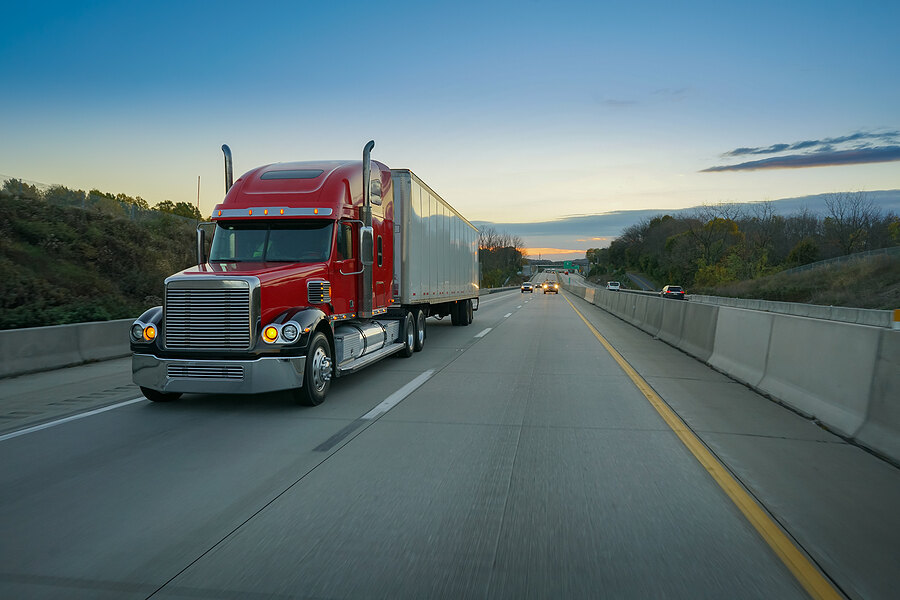Big trucks regularly cause deadly accidents and massive property damage when they wreck. While you cannot entirely prevent big truck accidents in Texas, you can improve safety and reduce the dangers they pose.
Taking the following steps can help you prevent accidents and reduce your long-term liability:
Install the Right Upgrades
Modern technology offers many advantages that can improve overall safety for truck drivers and those who share the road with them.
To make technology work in your favor, consider installing:
- Blindspot sensors and cameras that give truck drivers a better idea of what happens in their blind spots
- Reverse cameras
- Ram bumpers, which cause less damage in a relatively minor collision than standard metal bumpers
- Side mirrors with enhanced visibility options
- GPS tracking, including features that track the driver’s speed, miles traveled, and hours behind the wheel to ensure that the driver adheres to federal restrictions
Using the right technology can go a long way toward increasing overall safety on the road.
Invest in Good Tires
Tires can make a massive difference in ensuring truck driver safety. High-quality tires grip the road and keep the truck safe in various weather conditions, including ice and rain. They also improve overall maneuverability, giving drivers an edge on the road. Regularly replacing tires helps reduce the risk of a tire blowout, also increasing safety.
Take Care of Maintenance
FMCSA regulations state that trucking companies must maintain their vehicles to improve their overall safety. However, those regulations set the minimum standards that a trucking company or truck owner needs to meet to keep the vehicle safe. Even worse, some trucking companies cut corners and avoid standard maintenance or put off repairs on the truck until those issues pose a much bigger problem.
To increase big truck safety, take care of problems proactively instead of waiting until a problem causes an accident before taking care of it. If drivers mention issues with a truck’s brakes, engine problems, tire problems, or any other challenges that could increase the risk of a collision, make repairs as soon as possible. The longer you put off needed maintenance on your vehicles, the greater the likelihood of a dangerous crash.
Make Sure Trucks Get Loaded Properly
Shifting loads can cause collisions during transit. For example, if you have a flatbed with a load strapped down to it, loaders must strap the cargo down tightly to reduce the risk of it falling off, where it could cause severe crushing damage or create a road hazard.
In an enclosed trailer, a shifting load can also be dangerous. Shifting cargo can increase the risk of jackknife accidents, in which the trailer swings out independently from the rest of the vehicle and often pulls the truck itself out of control. A poorly-secured rear door can also cause items to fall out of the truck, resulting in considerable danger to other drivers.
Ensure that your drivers double-check loads before moving to increase the security of the load. Furthermore, if you hire individuals to load or unload trucks, make sure they understand proper loading procedures and make the load as safe as possible.
Track Driver Records
Truck drivers often spend long hours on the road. During those hours, they gain experience that can make them stronger drivers and reduce the risks posed by big trucks out on the road. However, truck drivers may also fall into bad habits or begin to take chances that increase the risk of an accident.
Carefully examine a truck driver’s records before hiring them, and continue to monitor drivers even after hiring. Failing to do so can increase the risk of an accident by letting dangerous drivers continue working. You may find yourself dispatching a dangerous driver who routinely endangers others, exposing you to liability.
Offer Adequate Training
In addition to tracking your drivers, make sure they have the training they need to handle any challenges they may encounter out on the road. You may want to provide regular training refreshers for your drivers or ensure that they have the experience to navigate potentially dangerous conditions, like ice and snow. Talk to your drivers about additional training they need or institute company-wide refreshers regularly.
Before drivers go out on their own for the first time, make sure they feel comfortable with their experience and the challenges they may face. Training can make the difference between a driver who can handle a potential accident scenario and one who inadvertently worsens the accident.
Maintaining safety can be a challenge, whether you work with a truck or a fleet of trucks. However, investing in safety measures and maintenance now can reduce the risk of an accident later, lowering your liability.
If you, or one of your drivers, suffers injuries in an accident due to another driver’s negligence, you may need a lawyer’s help to move forward with a personal injury claim. Contact a Personal Injury Law Firm attorney as soon after the accident as possible to learn more about your rights.


